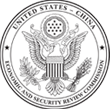Highlights of This Month’s Edition
- Bilateral trade: The U.S. goods trade deficit with China totaled $29.8 billion in August 2020; year-to-date, the goods deficit was $193.1 billion, down 16.5 percent year-on-year.
- U.S.-China trade tensions: The U.S. Department of Commerce (DOC) imposed export restrictions on SMIC, China’s largest semiconductor manufacturer, dealing a further setback to China’s costly but unfulfilled efforts to establish self-sufficiency in the industry; DOC clarified prohibited transactions for TikTok and WeChat, but questions remain on process, appropriate legal tools, and the future of TikTok’s ownership; China’s Ministry of Commerce released a guiding framework for its unreliable entity list without publishing the list itself.
- Financial markets: Leading index provider FTSE Russell announces it will include Chinese government bonds in its landmark global fixed-income investment index, elevating the international profile of China’s financial markets and significantly expanding Beijing’s access to foreign capital.
- Policy trends in China's economy: A new government plan to strengthen investment in strategic emerging industries and establish industrial clusters shows industrial policy remains a cornerstone of China’s economic management; CPP releases the Opinions on Strengthening the United Front Work of the Private Economy in a New Era, raising further concerns about Chinese government’s control of the domestic private sector.
- In focus – China’s 2060 carbon neutrality pledge: At the UN General Assembly, the Chinese government pledged to achieve carbon neutrality by 2060, but ongoing investments in coal both domestically and abroad undercut these promises.
October 2020 Trade Bulletin900.08 KB
